Translating parabolas
If you translate (slide) a parabola there are four elements you need to remember:
Start with the most famous parabola.
`y=x^2`
1. `y=x^2+1` Goes up `uarr` (Shifts the parabola up)
2. `y=x^2-1` Goes down `darr` (Shifts the parabola down)
3. `y=(x+1)^2` Goes left `larr` (Shifts the parabola to the left)
4. `y=(x-1)^2` Goes right `rarr` (Shifts the parabola to the right)
How do you remember translating parabolas:
Draw a diagonal line as in a graph
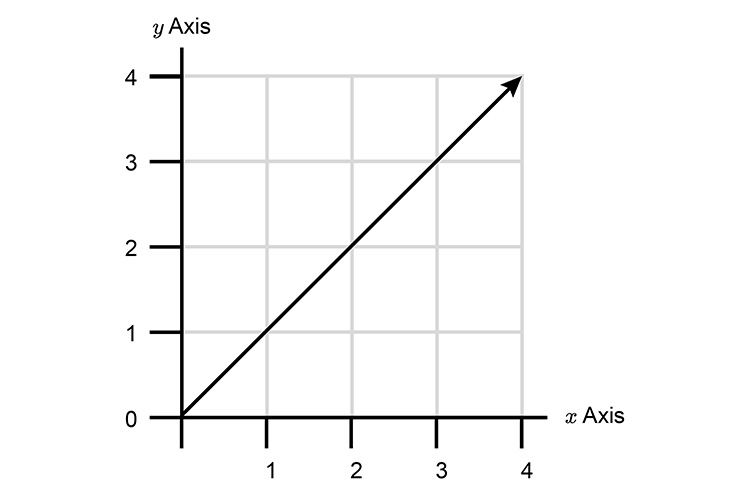
Then write
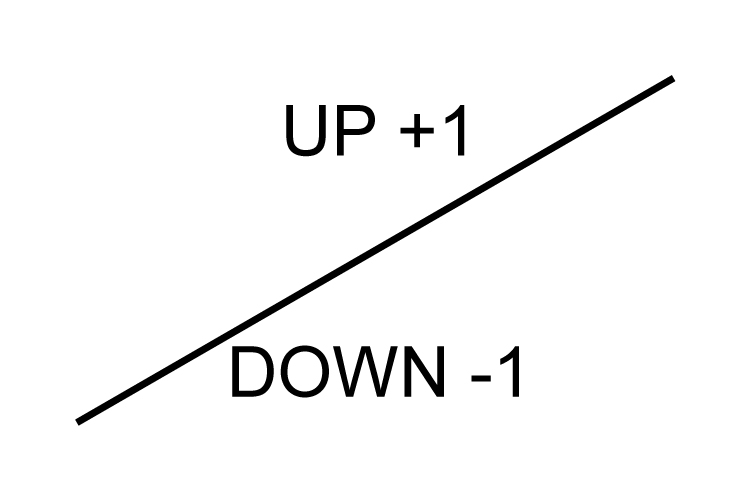
Then write
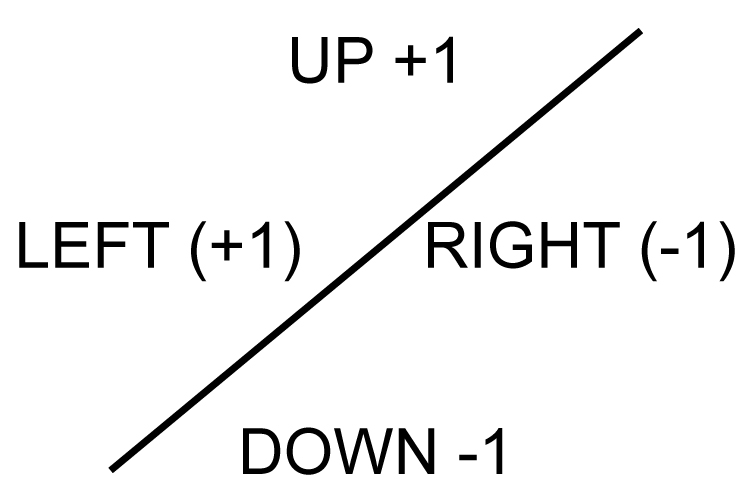
This should remind you.
| UP `+1` | `y=x^2+1` | |
| Down `-1` | `y=x^2-1` | |
| Right `(-1)` | `y=(x-1)^2` | |
| Left `(+1)` | `y=(x+1)^2` |
The results would be as the following examples:
Example 1
`y=x^2+1` or Up `+1`
And we can prove this or further help to remember this by plotting the graph out as follows:
| `x=3` | `y=3^2+1` | `=9+1` | `=10` | |
| `x=2` | `y=2^2+1` | `=4+1` | `=5` | |
| `x=1` | `y=1^2+1` | `=1+1` | `=2` | |
| `x=0` | `y=0^2+1` | `=0+1` | `=1` | |
| `x=-1` | `y=(-1)^2+1` | `=1+1` | `=2` | |
| `x=-2` | `y=(-2)^2+1` | `=4+1` | `=5` | |
| `x=-3` | `y=(-3)^2+1` | `=9+1` | `=10` |
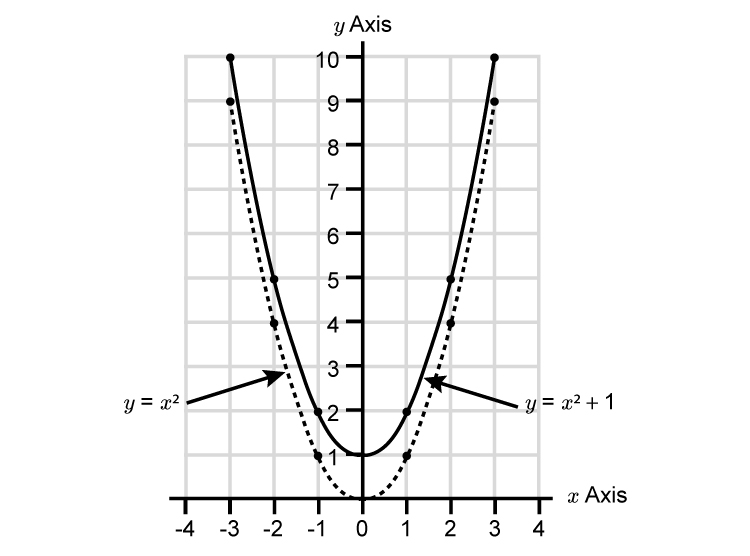
The parabola has been translated by `((0),(1))`
UP `+1\ \ uarr`
Example 2
`y=x^2-1` or Down `-1`
Again we can prove this or further help to remember this by plotting the graph as follows:
| `x=3` | `y=3^2-1` | `=9-1` | `=8` | |
| `x=2` | `y=2^2-1` | `=4-1` | `=3` | |
| `x=1` | `y=1^2-1` | `=1-1` | `=0` | |
| `x=0` | `y=0^2-1` | `=0-1` | `=-1` | |
| `x=-1` | `y=(-1)^2-1` | `=1-1` | `=0` | |
| `x=-2` | `y=(-2)^2-1` | `=4-1` | `=3` | |
| `x=-3` | `y=(-3)^2-1` | `=9-1` | `=8` |
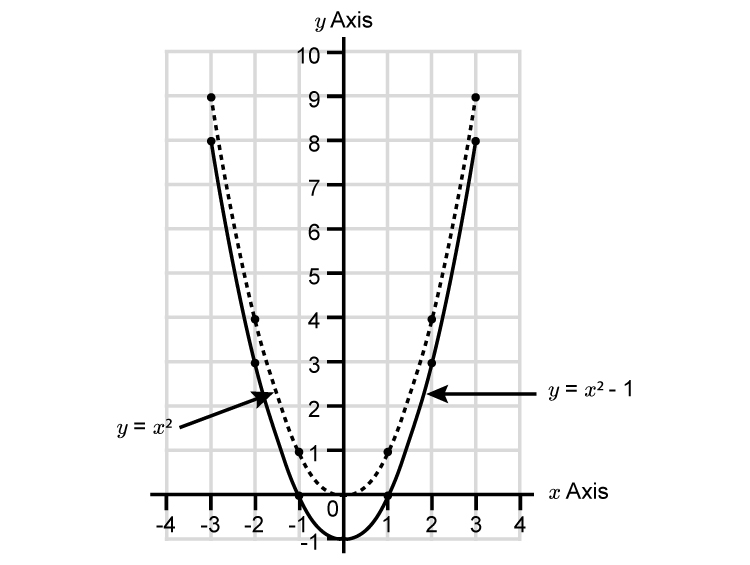
The parabola has been translated by `((0),(1))`
Down `-1\ \ darr`
Example 3
`y=(x+1)^2` or Left `larr`
NOTE:
See how we added brackets around the `x` value and added `+1`
We can prove this or further help remember this by plotting the graph as follows:
| `x=3` | `y=(3+1)^2` | `=4^2` | `=16` | |
| `x=2` | `y=(2+1)^2` | `=3^2` | `=9` | |
| `x=1` | `y=(1+1)^2` | `=2^2` | `=4` | |
| `x=0` | `y=(0+1)^2` | `=1^2` | `=1` | |
| `x=-1` | `y=(-1+1)^2` | `=0^2` | `=0` | |
| `x=-2` | `y=(-2+1)^2` | `=(-1)^2` | `=1` | |
| `x=-3` | `y=(-3+1)^2` | `=(-2)^2` | `=4` | |
| `x=-4` | `y=(-4+1)^2` | `=(-3)^2` | `=9` |
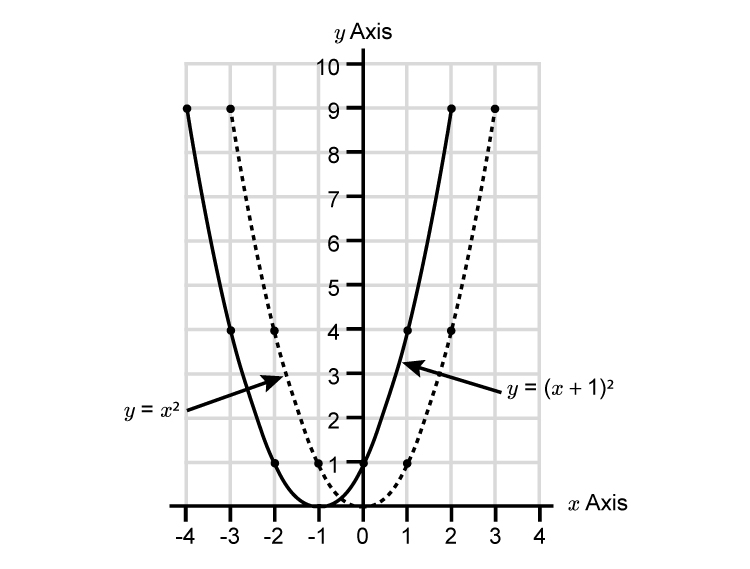
The parabola has been translated by `((-1),(0))`
Left `-1\ \ larr`
Example 4
`y=(x-1)^2` or Right `rarr`
NOTE:
See how we added brackets around the `x` value and subtracted `1`
We can prove this or further help remember this by plotting the graph as follows:
| `x=4` | `y=(4-1)^2` | `=3^2` | `=9` | |
| `x=3` | `y=(3-1)^2` | `=2^2` | `=4` | |
| `x=2` | `y=(2-1)^2` | `=1^2` | `=1` | |
| `x=1` | `y=(1-1)^2` | `=0^2` | `=0` | |
| `x=0` | `y=(0-1)^2` | `=(-1)^2` | `=1` | |
| `x=-1` | `y=(-1-1)^2` | `=(-2)^2` | `=4` | |
| `x=-2` | `y=(-2-1)^2` | `=(-3)^2` | `=9` | |
| `x=-3` | `y=(-3-1)^2` | `=(-4)^2` | `=16` |
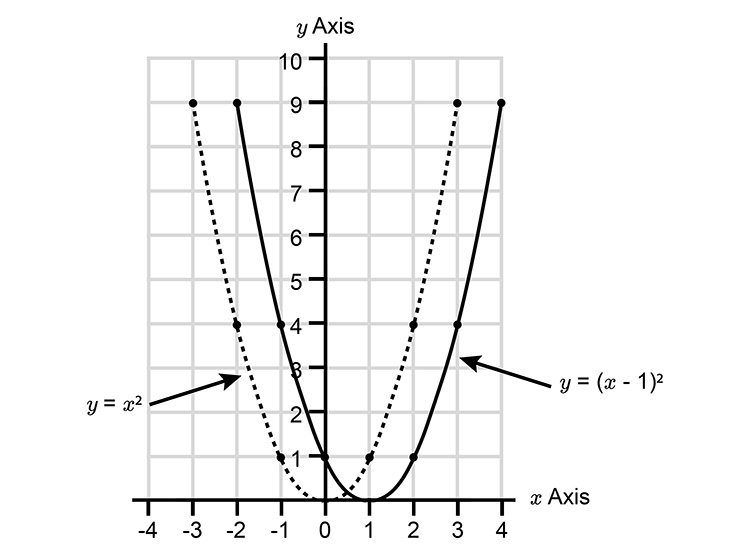
The parabola has been translated by `((1),(0))`
Right `+1\ \ rarr`




